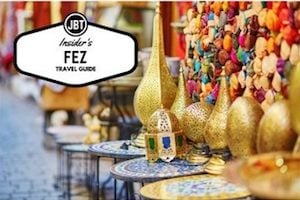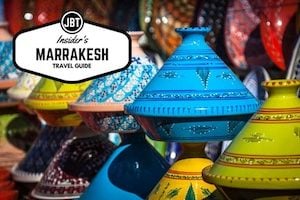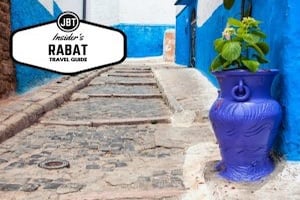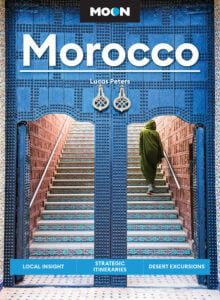You are enjoying your Morocco holiday. You have visited cities out of the past. You have walked where royals walked. You have visited the mystery of Tangiers and Casablanca. Now, though, you’re ready for a change from urban scenery to rural splendidness. Take a trip, then, through the Draa Valley. Here burned mountains, red clay villages seemingly sprouted from the earth and Berber villages with contrasting palm oasises line your itinerary. The Draa Valley is known as the date basket of Morocco. Shipping worldwide, this “date basket” provides an income and lifestyle to many in the area.
Picturesque is another word for what you find on your Draa tour. Distant Kasbahs give you the feeling of viewing the ancient palaces of the Arabian Nights. You find yourself surrounded by the past, boys riding donkeys, women washing clothes in the water channels and children being children near by. Life has a different somewhat ancient rhythm here.
While we offer a variety of trips, many travelers begin their excursion from Marrakesh where they’ve arranged a custom Moroccan tour beforehand. The trip takes them over the Tiz N Tichka and into Ouarzazate before winding your way to Zagora on the edge of the Sahara desert. Ouarzazate is considered the first stop on the Saharan Adventure. The town itself is non-descript, being built for tourist aand film studios. It’s market in the town square is worth a visit. Ourzazate has wide streets, many hotels and few restaurants. Known as Morocco’s Hollywood, it has been used as a base for many films such as Gladiator, Jesus, of Nazareth, and others.
Begin your visit of the Draa by going to the nearby Kasbah of Ait Benhaddou, a World Heritage site since 1987. Have your Moroccan tour operator plan an itinerary that includes kasbahs at Tamnougalt, Timiderte, Kasbah Said Arabi Ouled Atman, and Tinzouline. If possible, have your guide set your tour to include the wonderful souqs along the way. For example, Tinzouline has a great souq on Mondays.
The Draa Valley is best known for its palmeraies. Dates grown in this valley are especially sweet and tasty; the Royal Dates are considered the best (and are therefore the most expensive). Sellers and vendors alike sell the dates along the street about ever kilometer. You can see the series of small canals known as seguias along the streets too.
Another feature the Draa is known for is the gatarra, which is a system of underground irrigation canals. An interesting side fact is this system of canals was used by the Berbers and dates back to ancient times. It is said that crocodiles lived in the canals in olden times.
Other things to see besides the Kasbahs and date oasis’s would include the rock paintings or carvings. Timiderte is a good place to see some of the ancient rock carvings. Other places to view petroglyphs include Foum Chenna (Tinzouline), At Ouaazik ( Asguine Tarna, Tazzarine) Tiouririne e Tisguinine (Zagora). You can, also, learn about the prehistoric reptiles that once roamed the valley. At lghir N’tidri between Tagunit and Mhamid al-Ghizlane there is the necropolis of Foum Larjam. This ancient burial ground covers several kilometers. History in this area goes back more than a hundred thousand years. The oldest statue in human form was found in the Draa Valley.
Another site to take in would be the Watchtower about 30 kilometers before reaching Zagora. Once you reach Zagora, you are near the edge of the Sahara Desert where you can see erg chigaga. Just think, once upon a time, camel caravans passed through here. At the edge of the town is a well known and photographed sign saying “52 days to Timbuktu.” If you go another 25 kilometers you will reach the Tinfou Dunes. Here you can catch a spectacular sunrise or sunset. Climb a sand dune, if the urge strikes you. If you are a bit more adventurous, your Moroccan tour guide can arrange a camel ride and over night stay under the stars.
Near Zagora is the village of Amezrou, home to the old Jewish Kasbah, was once the center of life for a community of talented jewelers. Most of the Jewish people have left, although there are plenty of Jewish sights in Morocco left to see, however, as Berber craftsmen have taken over the tradition and their workshops are open to the public. Another village not far from Zagora is in the holy village of Tamegroute. It’s claim to fame through out history is the beautiful pottery created here. Tamegroute has a theological college dating from the 11th century and a distinguished library that once held 40,000 volumes. The library contains a collection of illuminated Korans, the oldest of which are written on gazelle skins.
Be sure and let your Moroccan tour operator know just what you expect when going on your Morocco holiday. Just sit back and relax and let the tour guide take care of all the details. Your Moroccan adventure has really just begun.
by Carole Morris








